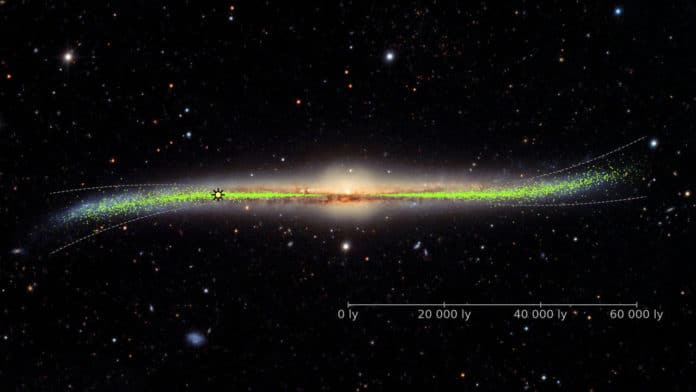Exactly how the gas has been ejected is still a mystery. A new study by the Australian National University (ANU) could have important implications for our galaxy’s future.
Recently an international team of scientists discovered a dense, cold gas shot out from the center of the Milky Way “like bullets.”
Professor Naomi McClure-Griffiths from The Australian National University (ANU) said, “Galaxies can be good at shooting themselves in the foot. When you drive out a lot of mass, you’re losing some of the material that could be used to form stars, and if you lose enough of it, the galaxy can’t form stars at all anymore.”
“So, to be able to see hints of the Milky Way losing this star-forming gas is exciting—it makes you wonder what’s going to happen next!”
“The wind at the center of the Milky Way has been the topic of plenty of debate since the discovery a decade ago of the so-called Fermi Bubbles—two giant orbs filled with hot gas and cosmic rays.”
“We’ve observed there’s not only hot gas coming from the center of our galaxy but also cold and very dense gas.”
“This cold gas is much heavier, so it moves around less easily.”
Astronomers believe that supermassive black holes lie at virtually all massive galaxies, even our own Milky Way. But it’s obscure whether this black hole has expelled the gas, or whether the thousands of massive stars blew it at the center of the galaxy.
Lead author Dr. Enrico Di Teodoro from Johns Hopkins University said, “We don’t know how either the black hole or the star formation can produce this phenomenon. We’re still looking for the smoking gun, but it gets more complicated the more we learn about it.”
“We see these kinds of processes happening in other galaxies. But, with external galaxies, you get much more massive black holes, star formation activity is higher, making it easier for the galaxy to expel material.”
“And these other galaxies are a long way away, we can’t see them in a lot of detail.”
“Our galaxy is almost like a laboratory that we can get into and try to understand how things work by looking at them up close.”
Journal Reference:
- Cold gas in the Milky Way’s nuclear wind, Nature (2020). DOI: 10.1038/s41586-020-2595-z
